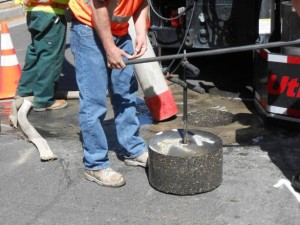Without good pipe-condition data, water main renewal cannot be optimized. Poor information about the integrity and life expectancy of water mains results in three basic asset management errors:
• Relatively strong mains are often discarded, because they are perceived to be weak
• Renewal of some mains occurs too late, resulting in repairs that were avoidable
• Rehabilitation methods are often inappropriately applied, either wasting money and producing an inferior product, or failing to use the residual strength of the host main and spending too much
In-pipe non-destructive examination (NDE) tools have existed for many years, but these tools are seldom used for small-diameter mains, partly because they are considered too expensive. Many utilities would rather invest in new pipe than in testing old pipe. A large part of the cost of an in-pipe NDE assessment entails inserting and extracting these devices within an operating water system. Moreover, when these NDE tools are used, there are no guidelines for interpreting and applying the data. Instead of using NDE tools, the conditions of mains are usually inferred from indirect data: break history, age, soil conditions, and from limited examinations of the pipes.
Two WaterRF projects are underway, aimed at practical applications of current NDE technology on small mains. Project 4471 proposes to use NDE in a non-disruptive manner to “sample” pipe in a system, then apply the informatoin to infer the condition of similar pipes. Project 4473 goes a step further, proposing to combine the assessment, engineering, and rehabilitation of water mains into a single product delivery.
To read more about this project download the full paper written by Dan Ellison, HDR, Ventura, California; Jonathan Leung, Los Angeles Department of Water and Power, Los Angeles, California; Sam Ariaratnam, Arizona State University, Tempe, Arizona; Andy Romer, AECOM, Orange, California; and Roy Brander, City of Calgary.

